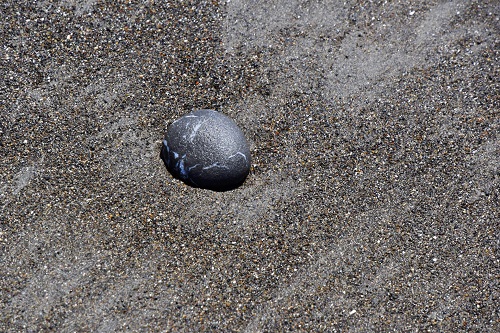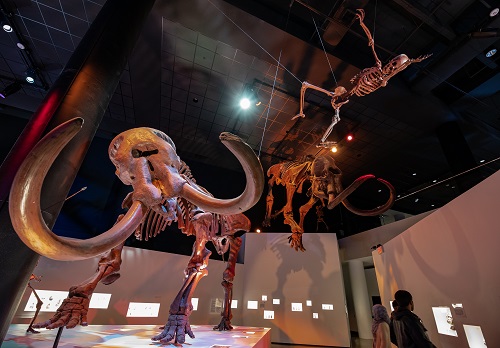At least once a week, David Temple receives a breathless message about an oddly-shaped rock or stony object some individual came across in their backyard or while on a nature hike. Almost everyone thinks they have found a priceless paleontological artifact that will change their lives forever. Sorry, but it’s not a dinosaur egg.
As the Associate Curator of Paleontology at the Houston Museum of Natural Science, it’s usually Temple’s job to break the bad news to these hopeful collectors. Millions of years of natural history mean that, yes, the world is full of ancient articles. Still, the chances of them being of scientific value beyond curiosity are incredibly slim. And it doesn’t mean it’s worth much monetarily.

“The most common thing we get at the museum is ‘eggs’ because humans are pattern-seeking animals,” Temple explained while on the way to a dinosaur dig in Utah. “We tend to classify things. People want to believe that everything is an egg.” Need proof that humans scan for patterns? Just head outside and look up. “We see people, places, and things in cloud formations,” he said.
Egg preservation is rare, uncommon due to the makeup of the shell, explained Temple. “Eggs have a few tell-tale features. A real egg will have minuscule pores. A chicken egg has tens of thousands of pores in it so the embryo can breathe.” Plus, the environment had to be ideally suited for fossilization.
So, how rare would it be to find a bona fide egg? It depends on where you live. Shards of preserved eggs are common in certain spots like South America, but the trade has now been outlawed. “The only time someone has brought in real, fossilized eggs, they’ve come from China,” said Temple. “And those are illegal.”
That hasn’t stopped people from believing they’re one of the lucky few. Once a man thought he’d found a clutch of dinosaur eggs in the woods near Conroe and brought them to HMNS for Temple to examine. “What he found were emu eggs laid by wild emus that had escaped captivity,” the curator recalled with a laugh. “He had found a blue emu egg. Technically, since emus are related to dinosaurs, he did find a dinosaur egg.”

Amateur fossilists can always email Temple their photos, and he’ll ID them. Not only is it fun to see what people have discovered, these exchanges also present learning opportunities, he added. If something stumps him (shocking yes, but it happens on occasion), Temple will send them to a colleague. And there’s even a handy Reddit outpost that summons the power of the internet hive mind to identify everyday items for the fossil-ly curious. Just make sure your images are clear, crisp, and taken from different angles. Finally, include a commonplace object in the frame for scale.
It’s not just rock-shaped eggs—or rather, egg-shaped rocks—that patrons bring in. A man from Dallas brought in half of a megalodon tooth. Well, half of a megalodon tooth that an indigenous person had turned into a knife centuries earlier.
Another man brought a piece of shale with a “sprocket” inside that was actually the very typical remains of an ancient arthropod. He contended it was an ancient piece of machinery from a long-gone technologically-advanced civilization. When he remained unsatisfied with Temple’s educated guess that it was an ancient shrimp, the curator sent the collector to NASA. Temple never did find out how that exchange went. “Often, people get surly or angry if I don’t give them the answer they are looking for,” he added.
Situations like these are the reason Temple’s often thought about holding a sort of “Antiques Roadshow” for area fossil hunters—an open-house at HMNS where locals can bring things they’ve found for his team to look at and, possibly, put to rest some funky legends behind family heirlooms. Or perhaps create a couple new ones.

As Temple himself put it, don’t let his quirky stories turn you off from fossil hunting in the Bayou City area, completely. “The most common fossils in Houston usually come from the Brazos River and High Island areas,” Temple said. Everything from mammoths to mastodons and sabretooth cats to early armadillos made their homes here during the Pleistocene Epoch. “Before our bayous in Houston were paved over, fossils were commonly found along the banks.”
As for Houston-area dinosaur fossils, Temple was quick to remind everyone that if our Jurassic friends are resting underground in Space City, they’re likely 26,000 feet below us. “You’d have to be digging one heck of a pool in your backyard to find those bad boys.”
Related Reads:
Digging in the Dirt: Getting to know the Dimetrodon of the Texas Permian Red Beds
Seashell Queen Reveals Most Common Treasures Found on Texas Beaches






